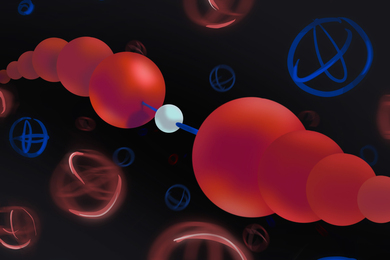The story behind the development of Merck's AIDS drug Crixivan sounds like the little engine -- or, in Merck's case, the big engine -- that could.
To the head of Merck & Co., Inc., the story demonstrates why the United States should stick to national policies that encourage innovation in the research-intensive pharmaceutical industry.
Raymond V. Gilmartin, the chairman, president and CEO of the New Jersey-based pharmaceutical giant, delivered a speech Tuesday on the impact of changes in health care on the pharmaceutical industry.
The talk at the Tang Center was part of the Industry Leaders in Technology and Management lecture series, co-sponsored by the School of Engineering and the Sloan School of Management and hosted by the Center for Technology, Policy and Industrial Development.
Over the 10 years that it took to get Crixivan to market, the drug encountered repeated setbacks. Not the least of those was the 1988 death of Dr. Irving Sigal, the Merck scientist behind the drug's original concept, in the terrorist bombing of PanAm flight 103, Mr. Gilmartin said in remarks prepared before his talk.
None of the thousands of compounds of protease inhibitors that were first tested worked. Another compound that disabled the virus in the laboratory proved unsafe in animals.
When Merck scientists literally invented and built a new compound atom by atom, initial clinical trials were positive, but the virus eventually started to outsmart the drug. It was only one anonymous drug recipient called Patient 142, who continued to respond well in clinical trials, that gave researchers hope. Their work finally led to the successful combination therapy called the drug cocktail, Mr. Gilmartin said.
Merck then had to build a multimillion-dollar manufacturing plant just for large-scale production of Crixivan's difficult molecule. A freak Virginia blizzard buried the partially constructed plant under four feet of snow, but the company managed to get the life-saving drug off the production line nine months ahead of schedule, he said.
Crixivan's price tag was astronomical. But the Centers for Disease Control reported that in 1997, AIDS deaths declined for the first time in the history of the epidemic. Crixivan -- the result of Merck's most aggressive research program ever -- is now reaching nearly 200,000 people worldwide, Mr. Gilmartin said.
ARGUES FOR FREE MARKET
He said America faces the same situation in health care as it did in the 1970s, when a cold, hard look at global competitiveness revealed that companies had to increase quality while controlling costs. Maintaining a free market, instead of instituting restricted access and governmental price controls, is necessary for the health of the pharmaceutical industry, he said.
Merck and other firms must be given opportunities to recoup the average $400 million it takes to bring one out of 10,000 tested compounds to market after 10 to 15 years of clinical trials and regulatory reviews, Mr. Gilmartin said.
He argued that the government must continue to support basic biomedical research and protect patents at home and abroad. Patent piracy in countries such as Argentina, Turkey, India and Egypt costs legitimate pharmaceutical companies an estimated $1 billion a year, he said.
The FDA should speed up approvals of new medicines, he added. Crixivan was approved in a record 42 days.
Mr. Gilmartin argued that "despite what we read in the papers," this market-driven approach has resulted in a better deal for consumers while maintaining a world-class level of health care.
"Annual increases in health care spending are at a 37-year low. New technologies, procedures and pharmaceuticals are being developed rapidly, giving people hope against once-deadly diseases. And Americans are living longer and healthier lives," he said.
"Our health care system is the best in the world because we are free to invest and innovate, free to develop new solutions, free to respond to consumer needs," Mr. Gilmartin said. "We can see the power of these freedoms at work as we achieve cost savings that were once thought to be unattainable and as we conquer diseases that were once thought to be unbeatable."
Last year, MIT and Merck formed a five-year, $15 million research and education collaboration. Merck is working with MIT science and engineering faculty on research and technology development and supporting 18 graduate and postdoctoral biology researchers.
A version of this article appeared in MIT Tech Talk on March 4, 1998.





